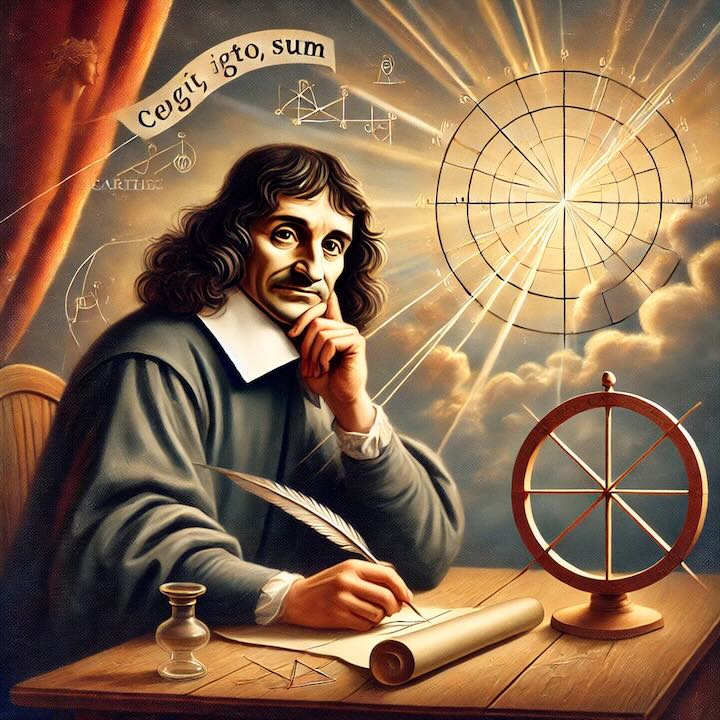
In 1637 Rene Descartes published Discours de la methode. This was a philosophical introduction to his scientific works in dioptrics, meteorology and geometry.
In 1637, René Descartes published Discours de la méthode (Discourse on the Method), a foundational work in modern philosophy and science. This text was significant not only for its philosophical insights but also for the revolutionary approach it took to scientific inquiry. The Discourse served as an introduction to three scientific essays that Descartes published alongside it: La Dioptrique (Dioptrics), Les Météores (Meteorology), and La Géométrie (Geometry). Each of these essays was groundbreaking in its own right, but it was the Discourse that tied them together with a unifying philosophical method. In this work, Descartes laid out a new approach to knowledge that would deeply influence the development of modern science and philosophy.
The full title of the Discourse on the Method is revealing: Discourse on the Method of Rightly Conducting One’s Reason and of Seeking Truth in the Sciences. In it, Descartes proposed a method for achieving certainty in knowledge by doubting everything that could possibly be doubted, a process known as “methodical doubt.” Descartes famously summarized this method in the phrase “Cogito, ergo sum” (I think, therefore I am), which asserts that the act of doubting one’s own existence serves as proof of the existence of one’s mind. This line of reasoning became a foundational element of Descartes’ philosophy, which placed the individual’s capacity for thought and reason at the center of the pursuit of knowledge.
The Discourse was revolutionary because it challenged the scholastic philosophy that had dominated European thought for centuries, a philosophy based largely on Aristotle’s teachings and interpretations. Scholasticism relied heavily on established authorities and sought knowledge through textual analysis and logical deductions. Descartes, by contrast, advocated for a new way of thinking that prioritized direct observation, experimentation, and the application of reason in place of unquestioning acceptance of authority. His method called for a systematic and clear-headed approach to understanding the natural world, which he believed could be explained through the application of mathematical principles.
Descartes applied this method in the scientific essays that accompanied the Discourse. La Dioptrique dealt with the science of optics and refraction, presenting a new understanding of how light behaves and how lenses function, paving the way for future developments in physics and the study of light. Les Météores focused on atmospheric phenomena such as clouds, rain, and winds, attempting to explain them through natural causes rather than the mystical or superstitious explanations common in earlier times. Finally, La Géométrie was one of Descartes’ most significant contributions to mathematics, as it introduced what we now know as Cartesian geometry. This essay demonstrated the application of algebra to geometry, which was a key development in the evolution of modern mathematics and provided the foundation for analytic geometry.
Discours de la méthode was crucial because it laid out a clear philosophical foundation for Descartes’ scientific work, but it also transcended science, becoming a foundational text in the history of Western philosophy. By arguing that reason and mathematical principles should guide inquiry into the natural world, Descartes shifted the focus of knowledge from established authorities to individual rational thought, fundamentally transforming the way humans approach the search for truth.
 >
>